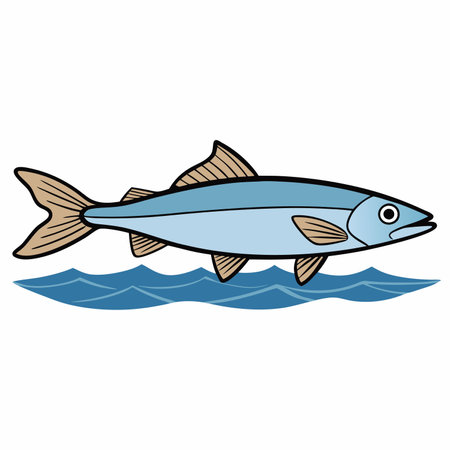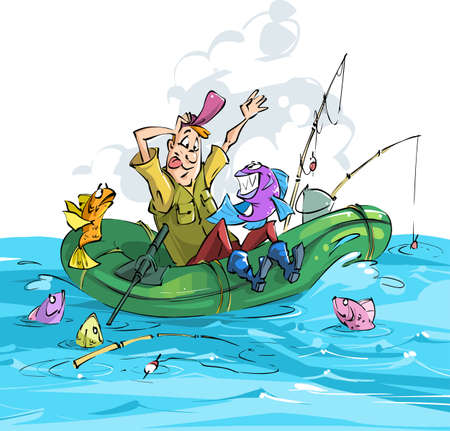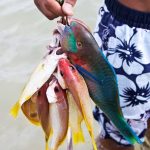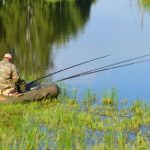1. Understanding North Americas Trout Species
North America is home to a wide variety of trout species, each with its own unique look, behavior, and preferred habitat. Whether youre fly fishing in the Rockies or casting from a canoe in the Northeast, knowing which trout youre targeting is key to choosing the right gear and tactics.
Common Trout Species in North America
Here’s a quick overview of the most well-known trout species found across North America:
| Trout Species | Appearance | Native Range | Preferred Habitat |
|---|---|---|---|
| Rainbow Trout | Silvery body with pinkish-red stripe along the side and black spots | Western U.S., introduced widely elsewhere | Cold, clear streams, rivers, and lakes |
| Brown Trout | Golden-brown body with black and red spots surrounded by pale halos | Europe (introduced to North America) | Larger rivers, lakes, and cool creeks |
| Brook Trout | Dark green with worm-like markings on the back and red spots with blue halos | Northeastern U.S. and parts of Canada | Crisp, clean mountain streams and spring-fed brooks |
| Cutthroat Trout | Greenish body with red-orange slash under the jaw | Western U.S. | High-altitude streams, alpine lakes, and rivers |
| Lake Trout | Deep-bodied with light spots on a dark background; forked tail | Northern U.S. and Canada | Deep, cold lakes |
| Golden Trout | Bright golden-yellow body with red horizontal bands and small black spots | Sierra Nevada Mountains (California) | High-elevation alpine lakes and creeks |
What Makes Each Species Unique?
- Rainbow Trout: Known for their acrobatic fights when hooked—perfect for anglers who love action.
- Brown Trout: Often wary and smart—challenging but rewarding to catch.
- Brook Trout: Small but beautiful—often found in remote mountain waters.
- Cutthroat Trout: Named for their throat slashes—great for fly anglers looking for native fish.
- Lake Trout: Deep-water giants—require different techniques like trolling or jigging.
- Golden Trout: High-country gems—known for their vibrant colors and scenic homes.
Tips for Identifying Trout in the Wild
- If it has a red slash under its jaw, you’re likely looking at a Cutthroat.
- If it’s golden with bright red stripes on its sides, it might be a Golden Trout.
- A forked tail usually points to a Lake Trout.
The Importance of Knowing Your Target Species
The first step in successful trout fishing is understanding what species live in your area or where you plan to fish. This knowledge helps you pick the right bait, lures, flies, line weight, and even the best time of year to fish. In upcoming sections, we’ll dive deeper into gear setups and proven tactics tailored for each trout type.
2. Essential Gear for Trout Fishing
Whether youre chasing brook trout in Appalachian streams or casting for lake trout in the Great Lakes, having the right gear is key to success. Each trout species and habitat calls for specific equipment, so let’s break down the must-have rods, reels, lines, and bait setups youll need to catch every trout species across North America.
Rods and Reels
The choice between fly fishing and spinning tackle often depends on the water type and the trout species you’re targeting. Heres a quick guide:
| Trout Species | Recommended Rod | Reel Type | Best Use |
|---|---|---|---|
| Brook Trout | 6-7 ft light-action spinning rod / 3-4 wt fly rod | Ultralight spinning reel / Small arbor fly reel | Small streams, creeks |
| Rainbow Trout | 6-8 ft medium-light spinning rod / 5 wt fly rod | Light spinning reel / Medium arbor fly reel | Lakes, rivers, stocked ponds |
| Brown Trout | 7-9 ft medium-action spinning rod / 5-6 wt fly rod | Medium spinning reel / Large arbor fly reel | Bigger rivers, undercut banks |
| Laketrout (Mackinaw) | 8-10 ft heavy-action trolling/spinning rod / 7-8 wt fly rod | Baitcasting/trolling reel / Large arbor fly reel with sink tip line | Deep lakes, trolling or deep water casting |
| Cutthroat Trout | 6-8 ft light-medium action spinning rod / 4-5 wt fly rod | Light spinning reel / Medium arbor fly reel | Mountain streams, alpine lakes |
Fishing Lines and Leaders
Your line setup matters just as much as your rod and reel. Here’s how to match your line to your target trout:
- Spinning Gear: Use 2–6 lb monofilament for small stream trout like brookies; go up to 8–12 lb fluorocarbon for brown or lake trout in deep or clear water.
- Fly Fishing: Match the weight of your fly line to your rod (e.g., 5 wt line for a 5 wt rod). Use tapered leaders (7.5–12 ft) with tippet sizes ranging from 5X (small flies) to 2X (larger streamers).
Bait and Lure Setups by Water Type
The best bait or lure often depends on water conditions—like clarity, temperature, and flow. Here’s a simple chart to help you choose:
| Water Condition | Bait/Lure for Spinning Rods | Flies for Fly Rods |
|---|---|---|
| Clear Streams & Rivers | Panfish worms, inline spinners (Mepps #0-#1), small spoons (1/16 oz) | Drys: Elk Hair Caddis, Adams; Nymphs: Pheasant Tail, Hares Ear |
| Muddy or High Water | Bright-colored spoons, PowerBait nuggets (for stocked trout) | Larger nymphs or streamers: Woolly Bugger (black/chartreuse), San Juan Worms |
| Lakes & Reservoirs (Stillwater) | Sinking crankbaits, live minnows (where legal), jig heads with soft plastics | Streamers: Zonkers, Leech patterns; Midges under indicators in calm water |
| Cold Deep Lakes (Lake Trout) | Trolled spoons (like Williams Wablers), tube jigs tipped with cut bait | Sinking lines with Clouser Minnows or large weighted streamers |
Tackle Box Essentials Every Trout Angler Should Carry:
- A variety of hooks (#10–#16 for bait fishing)
- Spoons and spinners in silver/gold/red colors (1/16 to 1/4 oz)
- Bobbing indicators and split shot weights for nymphing or bait rigs
- Tippet spools from sizes 5X to 2X for varying conditions
- A small landing net with rubber mesh to protect fish slime coating if practicing catch-and-release
No matter what kind of trout youre after—from wild cutties in the Rockies to chunky rainbows at your local pond—the right gear gives you an edge. By matching your tackle to the environment and species, youll improve your chances of hooking into more fish wherever you cast next.

3. Habitat and Seasonal Strategies
To catch every trout species in North America, understanding where they live and how their behavior changes with the seasons is key. Trout are cold-water fish that respond to temperature, water flow, and food availability. Whether youre fishing in a fast-moving mountain stream or a deep lake, knowing how to read the water and adjust your approach throughout the year can make all the difference.
Seasonal Trout Behavior
Trout react differently depending on the season. Heres a quick breakdown of what to expect:
| Season | Behavior | Best Tactics |
|---|---|---|
| Spring | Active feeding after winter; move into shallower waters | Nymphs, wet flies, small spinners; focus near inlets and riffles |
| Summer | Seek cooler, deeper water during midday; active early morning and evening | Dry flies, terrestrials, deep-diving lures; fish shaded areas or tailwaters |
| Fall | Pre-winter feeding spree; spawning for some species like brook and brown trout | Streamers, egg patterns, larger nymphs; target gravel beds and undercut banks |
| Winter | Sluggish metabolism; hold in deep pools with slow current | Small jigs, midges, slow drift techniques; use light tackle and stealthy presentation |
Reading Water Types Across the U.S.
Rivers and Streams
In moving water, trout prefer areas that offer both cover and access to food. Look for:
- Pools: Deep, calm sections where trout conserve energy.
- Riffles: Shallow, fast-moving areas rich in oxygen and insect life.
- Eddies: Calm pockets behind rocks or bends where food collects.
- Undercut Banks: Provide shade and protection from predators.
Lakes and Reservoirs
Lakes present different challenges. Trout tend to follow thermoclines—layers of water with ideal temperatures—and structure like drop-offs or submerged logs. Focus on:
- Early Morning & Late Evening: Fish come closer to shore to feed.
- Trolling or Casting from Boats: Helps cover more water when fish are deeper.
- Icy Winters: Ice fishing with jigs and bait can be productive in northern regions.
Mountain Streams and High-Elevation Waters
Crisp mountain streams are prime trout habitats, especially for brook and cutthroat trout. These waters are usually cold year-round, but seasonal snowmelt can impact clarity and flow. Ideal fishing times here are late spring through early fall. Use ultralight gear and natural presentations like small dry flies or drifting worms.
Regional Insights: Where to Find Trout Year-Round in the U.S.
| Region | Main Trout Species | Best Seasons | Popular Waters |
|---|---|---|---|
| Northeast (e.g., NY, PA) | Browns, Brookies, Rainbows | Spring & Fall for streams; Winter ice fishing in lakes | Catskills Rivers, Adirondack Lakes |
| Southeast (e.g., NC, GA) | Browns, Rainbows, Brook Trout (wild & stocked) | Fall through Spring due to cooler temps at elevation | Smoky Mountains, Nantahala River |
| Midwest (e.g., WI, MI) | Browns, Rainbows, Brook Trout | Lakes in Summer; Streams peak in Spring/Fall | Pere Marquette River, Driftless Area creeks |
| Rockies (e.g., CO, MT) | Cuts, Browns, Rainbows; Lake Trout at altitude lakes | Late Spring through Early Fall; Ice fishing in Winter lakes | Bighorn River, Flathead Lake, Gunnison River |
| West Coast (e.g., CA, OR) | Browns, Rainbows (including Steelhead), Golden Trout | Mild Winters allow year-round action | Klamath River, Sierra Nevada streams |
| Alaska & Pacific Northwest (e.g., WA) | Dolly Varden, Rainbows/Steelhead | Sockeye runs in Summer; Steelhead Winter/Spring | Kodiak Island rivers, Olympic Peninsula streams |
The key is to adapt your tactics based on both geography and time of year. Learning how trout behave seasonally—and understanding how to read different types of water—will help you locate fish no matter where or when youre fishing across North America.
`
4. Tactics for Catching Each Trout Species
Different trout species call for different strategies. Whether you’re casting in a small mountain stream or trolling deep lakes, knowing how each type of trout behaves will help you catch more fish. Below is a breakdown of the best tactics to use for the most popular trout species found across North America.
Brook Trout
Brook trout are often found in cold, clear, high-elevation streams and lakes. These fish spook easily, so stealth is key.
Tactics:
- Dry Flies: Use small dry flies like Adams or Elk Hair Caddis. Present them gently to avoid spooking fish.
- Light Tackle: Use ultralight rods and 2-4 lb test line to match their environment and sensitivity.
- Approach Carefully: Stay low and avoid casting shadows over the water.
Rainbow Trout
Rainbow trout are adaptable and can be caught in rivers, streams, and lakes. They are aggressive feeders, making them ideal targets for a range of techniques.
Tactics:
- Lures and Spinners: Rooster Tails, Panther Martins, and small spoons work great.
- Nymphing: Try beadhead nymphs under an indicator in moving water.
- Bait Fishing: Use worms, PowerBait, or salmon eggs in stocked waters.
Brown Trout
Brown trout tend to be more cautious and prefer deeper pools and undercut banks. They often feed at dawn or dusk.
Tactics:
- Streamer Fishing: Use woolly buggers or muddler minnows to imitate baitfish.
- Casting Crankbaits: Small jointed minnows or countdown lures can trigger strikes.
- Night Fishing: Fish after dark with larger flies or lures for trophy-sized browns.
Cutthroat Trout
Mainly found in western states, cutthroat trout thrive in alpine streams and lakes. They’re known for rising to dry flies but can also be tempted with subsurface patterns.
Tactics:
- Dry-Dropper Rigs: Combine a dry fly with a trailing nymph for double the chances.
- Sight Fishing: Look for cruising fish in clear water and cast ahead of them.
- Mimic Natural Food: Match local insect hatches closely for best results.
Laketrout (Mackinaw)
Laketrout live deep in cold northern lakes. They grow large and require specialized methods to reach their depths.
Tactics:
- Deep Trolling: Use downriggers or lead-core line with spoons or swimbaits.
- Vertical Jigging: Jig heavy tube jigs or blade baits near drop-offs and structure.
- Icy Advantage: In winter, target them through the ice using sonar to locate schools.
Tactics Overview by Species
| Trout Species | Main Habitat | Best Tactic |
|---|---|---|
| Brook Trout | Crisp mountain streams & ponds | Stealthy dry-fly presentation |
| Rainbow Trout | Lakes & flowing rivers | Lures, bait fishing, nymphing |
| Brown Trout | Pools & undercut banks | Nymphs, streamers, night fishing |
| Cutthroat Trout | Western alpine waters | Sight fishing with dries & droppers |
| Laketrout (Mackinaw) | Deep northern lakes | Trolling & vertical jigging |
Selecting the right approach based on the trout species you’re targeting makes all the difference. Tailor your gear and technique to where they live and how they feed—and you’ll see more action on your line.
5. Expert Tips and Regional Advice
Trout fishing across North America is as diverse as the landscapes themselves. To really dial in your success, it helps to learn from seasoned local anglers who know their home waters inside and out. From the mountain streams of Montana to the high-altitude rivers of Colorado and the shaded creeks of the Appalachians, each region has its own tricks, fly patterns, and timing that can make or break your day on the water.
Montana: Big Sky Country Tactics
Montana is a trout angler’s paradise with famous rivers like the Madison, Gallatin, and Yellowstone. Veteran guides here recommend:
- Best time to fish: Late June through early September
- Top flies: Elk Hair Caddis, Parachute Adams, Woolly Bugger
- Insider tip: Fish early mornings or late evenings during hopper season (July–August) for explosive topwater action.
- Local advice: “Don’t overlook side channels—big browns love those slower pockets.” – Jake M., Bozeman-based guide
Colorado: High Elevation Challenges
The Centennial State offers everything from alpine lakes to tailwaters below big dams. Each fishery demands a unique approach:
- Best time to fish: May through October
- Top flies: Zebra Midge, RS2 Emerger, Chubby Chernobyl
- Tactic highlight: In tailwaters like the Fryingpan River, use 6x tippet and tiny midges (#20–24) for finicky trout.
- Local advice: “On clear days, stealth is key. Wear dull colors and approach from downstream.” – Sarah K., local angler from Glenwood Springs
The Appalachians: Eastern Brook Trout Secrets
The Appalachian Mountains are home to native brook trout in cool, shaded streams. These fish may be small but offer thrilling action in wild settings.
- Best time to fish: Spring and fall when water temps are ideal
- Top flies: Adams Irresistible, Royal Wulff, Hare’s Ear Nymph
- Tactic highlight: Use short casts and high-stick nymphing to cover pocket water efficiently.
- Local advice: “Keep it simple—brookies aren’t picky but spook easily. Sneak up slow.” – Tom R., Smoky Mountains fly fisherman
Regional Fly Patterns at a Glance
| Region | Go-To Flies |
|---|---|
| Montana | Elk Hair Caddis, Hopper Patterns, Woolly Bugger |
| Colorado | Zebra Midge, RS2 Emerger, Chubby Chernobyl |
| Appalachians | Royal Wulff, Adams Irresistible, Hare’s Ear Nymph |
Pro Tip:
No matter where you’re fishing in North America, always check local hatch charts and talk to nearby fly shops. These folks know what’s working right now better than anyone else.
If youre traveling across regions chasing different trout species—from rainbow to cutthroat—adapting your gear and techniques based on local knowledge can make all the difference between a good day and a legendary one.


